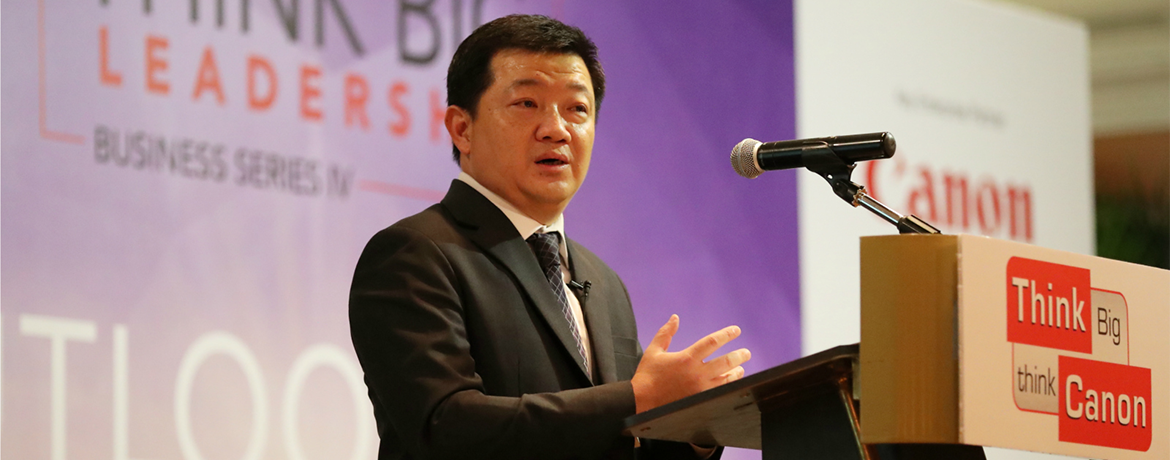
The Way Forward in 2017
After years of experiencing constant growth, businesses in Singapore will be facing a slowing economy in 2017. With analysts trimming down Singapore’s forecasted growth rate for the third time to 1.4 percent, businesses, big or small will certainly feel the repercussions of global market forces. However, Canon Singapore’s Director & General Manager of Business Imaging Solutions, Vincent Low shares his views on some sources of economic optimism for the year ahead.
SME will power future economies
Despite Southeast Asia’s relatively small size compared to the rest of the world, it is likely that growth in the next decade will come from this region. Small and medium enterprises (SMEs) across the Asia-Pacific contribute 20 percent to 50 percent of their respective nation’s gross domestic product growth, employ half the workforce and account for over 90 per cent of all enterprises. With this, SMEs would have a higher level of contribution to their home nation’s gross domestic product in 2017. Currently, SMEs in Southeast Asia specialise in low-technology, labour-intensive and low-risk tasks, while foreign multinationals typically occupy the higher value-added segments of the global value chain. In 2017, SMEs may embark and slowly explore a gradual shift away from low-technology, labour-intensive work to work of a higher value.
In order to do this well, they will need to look at investing in technology to drive productivity and eventually at cost reduction, and value driven solutions for continuous business process improvements to ensure that their business objectives are being met. For businesses that are looking at expanding overseas, 2017 will be an opportune time. Together with the implementation of the Asean Economic Community (AEC), which has forged closer integration among Asean’s economies by lowering barriers to trade, and the driving force of strong fundamentals, there is strong potential for significant investment opportunities for businesses in Singapore to pursue.
Flexible approach to work
The competition for skilled talents will intensify. Human capital is one of Singapore’s most important resource, but it is a very challenging task to manage it well. What employees across markets in the region will expect in 2017, is for companies they work for to catch up with the smart, user-friendly technology they use at home. For businesses that want to retain and attract top talent, businesses must accelerate the shift to a more ‘anytime, anywhere’ approach to work, where employees can choose the most user-friendly productivity tools and technology they want to use – be it inside or outside the office. Enterprises are increasingly investing in print and scanning solutions that enable them to marry the physical with digital, allowing them to scan physical documents and digitising these documents anywhere, as part of work processes. User authentication is a common feature in modern multi-functional printers. For example, at Mediacorp Pte Ltd in Singapore, identification (ID) cards or PIN numbers were required for staff to release print jobs. Administrators noticed that staff would often misplace their identification (ID) cards or forget their PIN numbers altogether, dragging productivity levels down. Now, employees can use existing employee cards or their normal corporate login and/or password to release print jobs. This means that employees no longer have to carry around a separate ID card or remember a different set of passwords — a boon to overall productivity. This will set a new standard in delivering personalised services to employees and allowing them to be the curator of their own work experiences.
Print security will increase in importance
Whilst cost will always be a primary reason for adopting new technologies, organisations are looking for more than just cost savings to drive business value. Third-party research found that security remains top of the agenda. 70 percent of organisations have suffered a print security breach, yet only 42 percent has placed significant effort into print security. The need for secure print solutions and services is heightened given the fact that over 71 percent of organisations reported at least a single print-related data breach in the past year. In 2017, businesses need to move toward a model that conducts legitimacy tests for every transaction, without sacrificing user experience. Anticipating and preparing for emerging cybersecurity threats is key to protecting consumers and businesses alike. In 2017, we need to beef up the way we understand the context of every activity, keep an activity log of every print activity, and recognise that it is not ‘if’ a business is hacked, but ‘when’. When print security is implemented properly and users know that they are tracked, it not only enhances the print environment, but also encourages responsible print behaviour from users and in turn, reduces printing costs.
While businesses approach a new year with trepidation and reservation about the challenges ahead, there are opportunities that can be grasped so long businesses adapt quickly and take these challenges as they come.
For more case studies and business solutions to power up your startup or SME, follow Canon Singapore and Vincent Low on LinkedIn.
